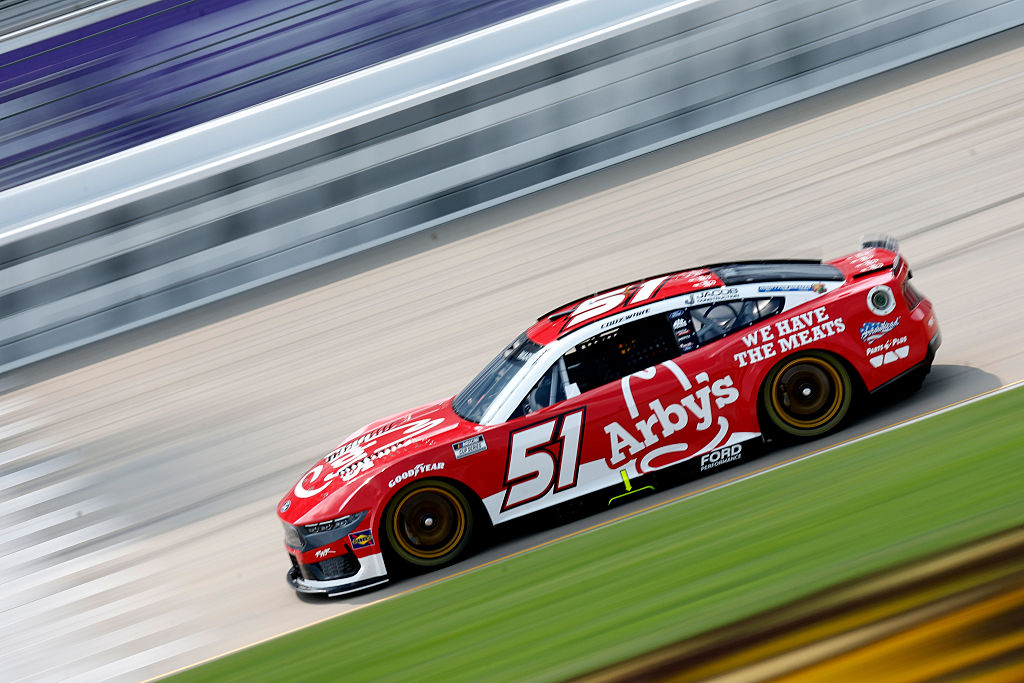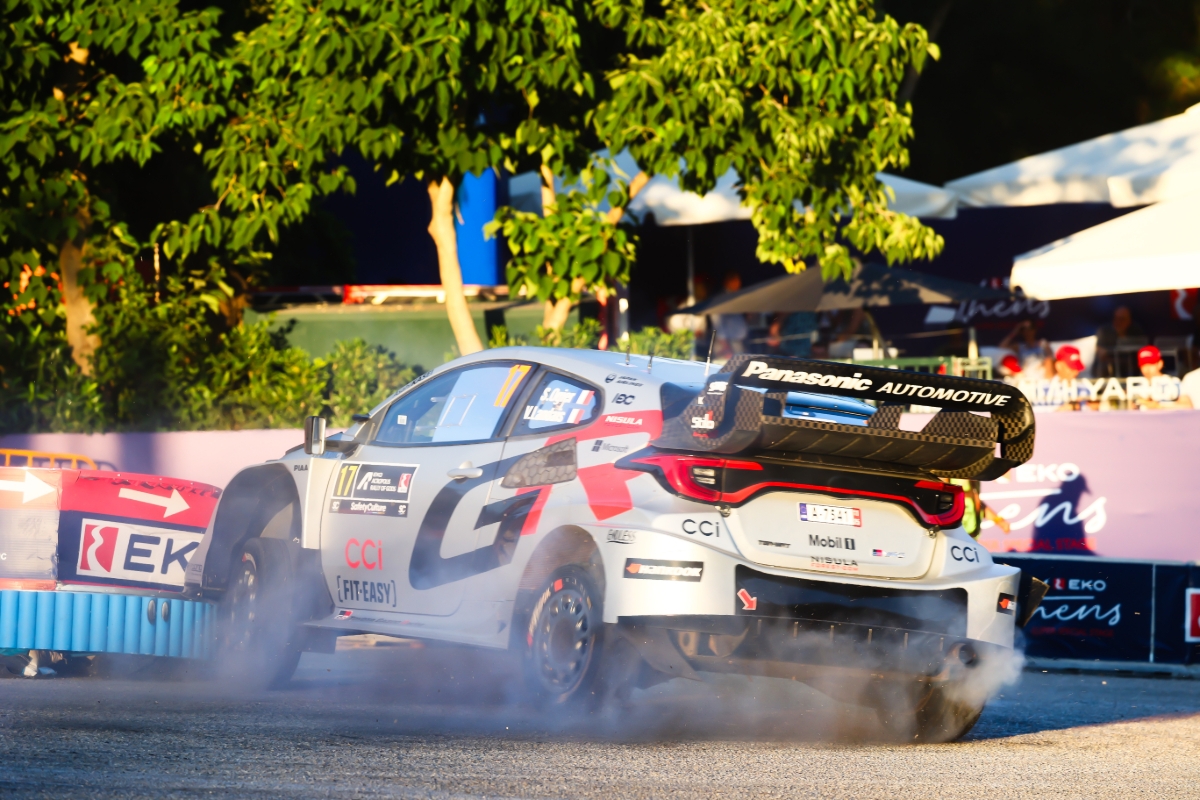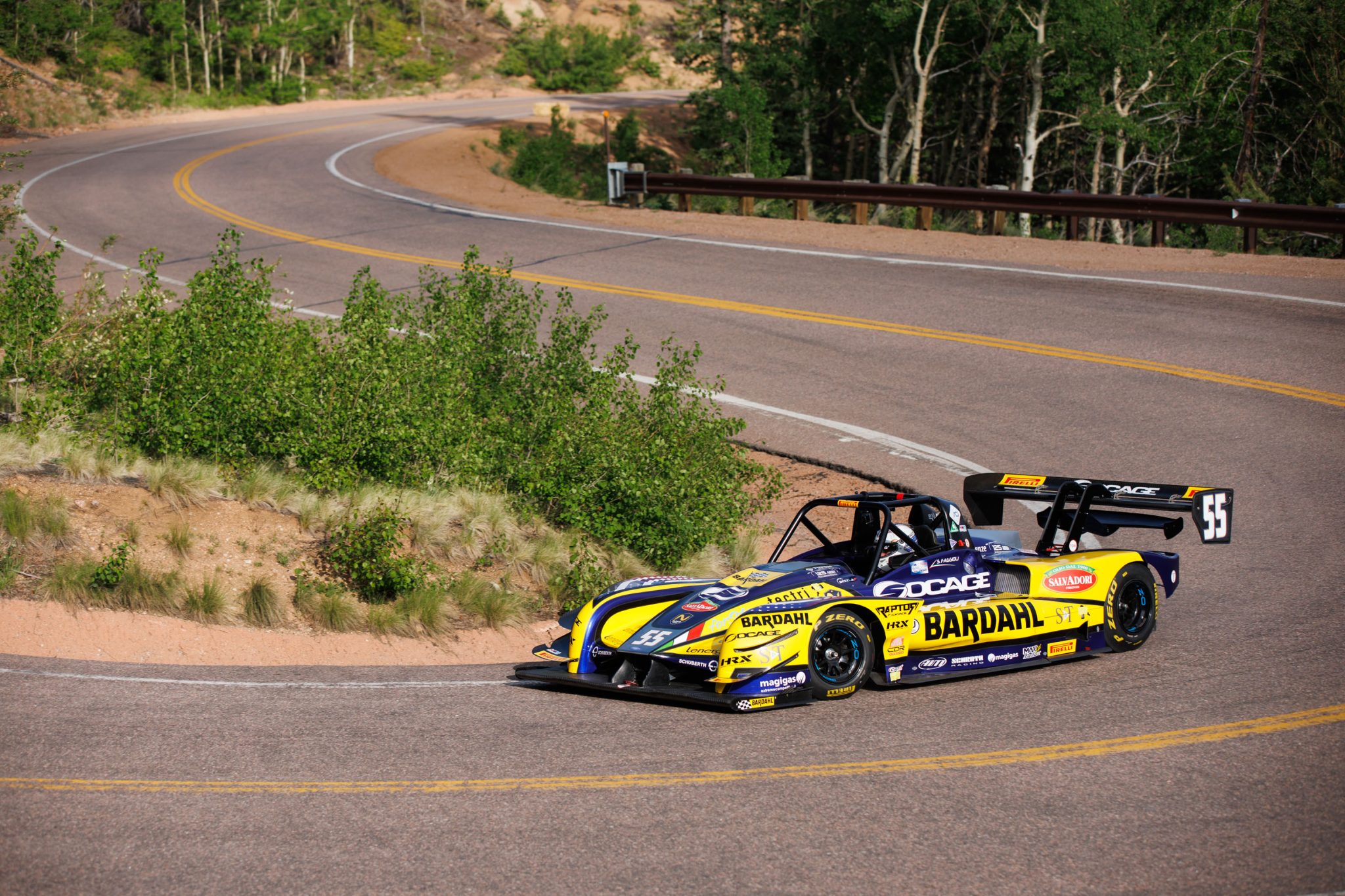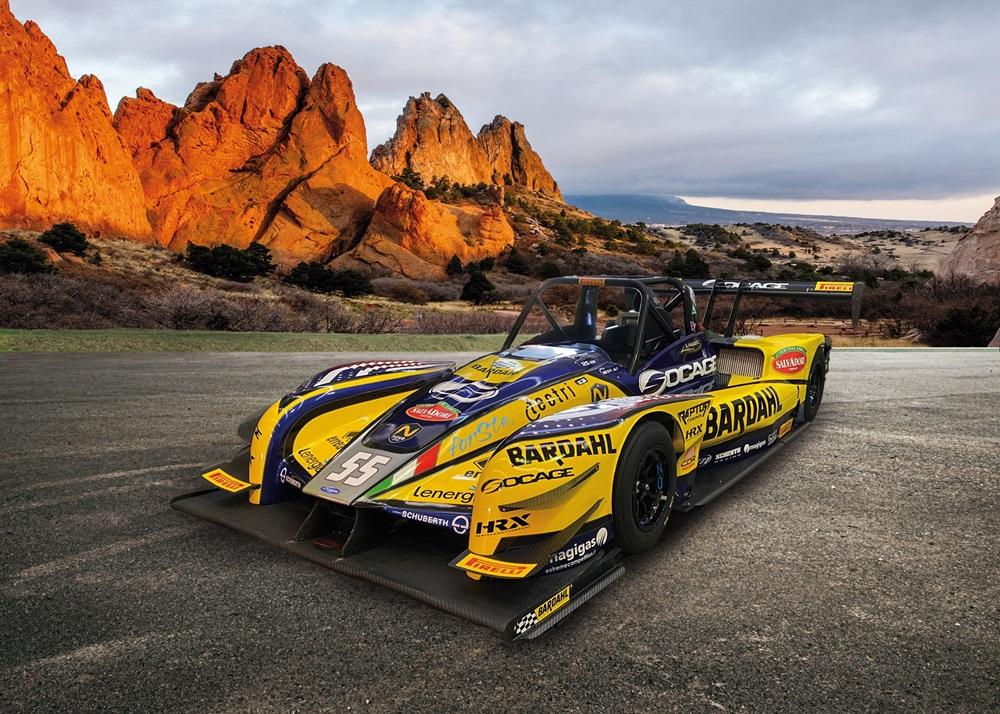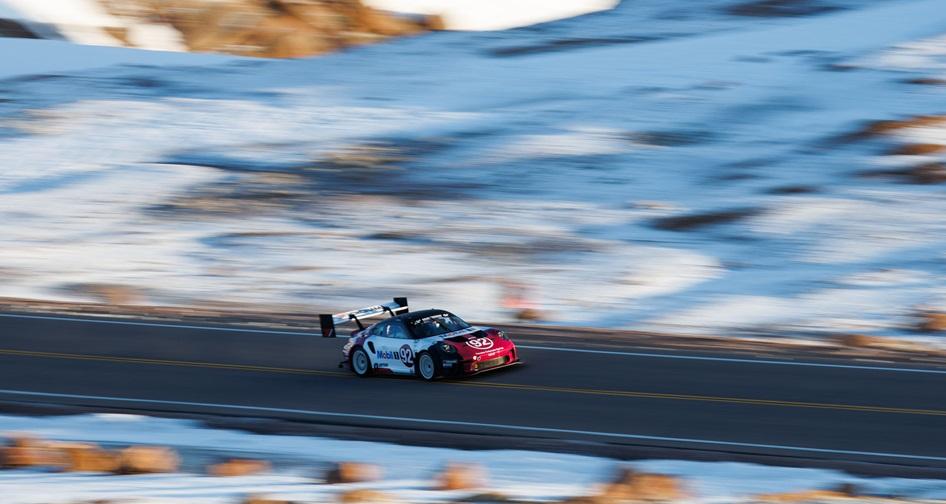
ShareThis is disabled until you accept Social Networking cookies.
Pikes Peak is Legge’s latest mountain
Is there anything Katherine Legge hasn’t raced in her 20-year American career? The first female winner in Formula Atlantic ran competitively in Champ Car and the IndyCar Series and won races in IMSA. This year, she competed in the Chili Bowl midget extravaganza and has made a series of starts across the NASCAR spectrum. And seriously, how many people can claim to have driven the DeltaWing?
Last year, Legge’s long association with Honda Performance Development (now known as HRC U.S.) took her to the Pikes Peak International Hill Climb, where she drove an Acura Integra Type S DE5 – a turn-key, HRC-developed racing car that is normally found competing in the TCX class of the SRO TC America championship. She returned again recently to "The Mountain" to try to beat the front-drive record of 10m48.094s set in 2018 by Acura engineer Nick Robinson in an Acura TLX, having fallen less than three seconds short last year. But inhospitable weather on race day (June 22) prevented the field from running the full 12.42-mile pass. The 44-year-old racer was well ahead of record breaking pace for the segment she did get to run and is hopeful of mounting a third Pikes Peak attempt in 2026.
Legge spoke about the experience to RACER contributor John Oreovicz.
RACER: It must have been disappointing that foul weather prevented you from completing the run and challenging the record. How do you reflect on your second experience at Pikes Peak?
LEGGE: You can’t argue with Mother Nature, right? It wasn’t anybody’s fault. It was just unfortunate. The team and everybody at Acura and HRC gave me a great car and we had two very successful weeks of testing up the hill. When we did finally get to do the run, we were 5-1/2 seconds up on where we had been at that point last year, and we only needed 3 seconds. We would have crushed that record. I’m disappointed not to have it on paper and not being able to finish it, but happy that everyone is safe. We still got to put on an exhibition for the fans and show everybody what the Integra is capable of and what the hydrogen car (a prototype Honda CR-V e:FCEV that Formula Drift champion Dai Yoshihara drove in the Exhibition class) was capable of. So, it was successful; it was just missing the ultimate reward at the end of the day.
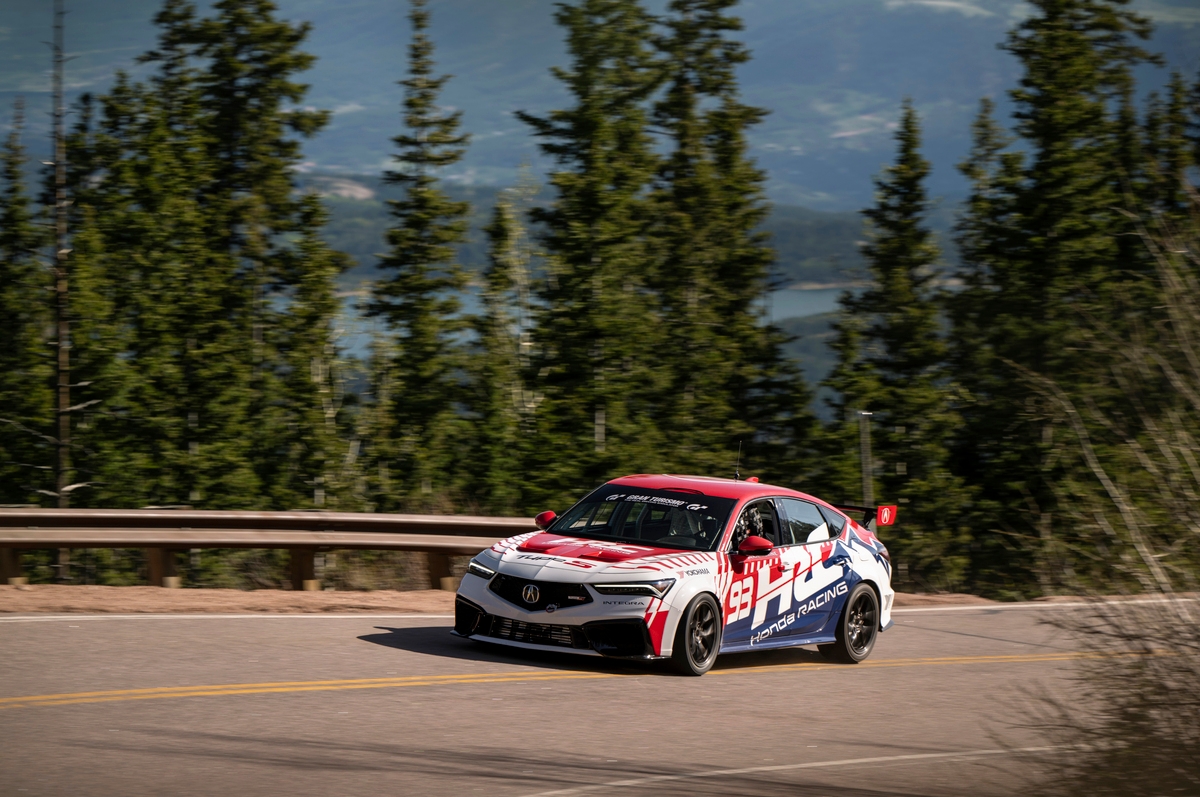
RACER: Was it in some ways easier the second time around, just knowing the procedures and quirks of the event?
LEGGE: Much. It’s always way less stressful when you know where you’re going and what you’re supposed to be doing and how it works and where you’ve got to be. You’re not as worried about missing something or not doing something right. It was also nice that I knew the hill a lot better!
RACER: How do you learn a place like Pikes Peak? The only thing I think it could be comparable to is the Nurburgring Nordschleife.
LEGGE: You can learn it on a simulator, but I learned it by watching videos over and over and over again. There’s obviously nothing like actually driving it, where you get the sense of the elevation and the drop-off and wear. Every year it’s different visually, depending on weather and where they’ve set up hay bales and barriers. Really the only true way to learn it is by driving it. Even on the Saturday (the day before the race), I had to do some filming work for the Pikes Peak organizers, and then I drove it twice in the Acura ADX that was my street car for the week, just to see where the barriers were in my head and kind of get used to it.
RACER: When you watch video, do you watch cars with similar performance capabilities to the Acura, or do you watch the super-fast "King of the Hill" machines?
LEGGE: I watch my own runs, actually. I watched my runs from last year. But last year, I tried to watch comparable stuff, and I tried to get a mix. I also got coached by Paul Dallenbach, who is really good there and is a close friend of mine. He took me up the hill a couple times and sent me a bunch of videos of all different kinds of cars to get an idea of the relative speed. By watching my own videos, I was able to say, ‘Well maybe I could roll a little more speed here,’ or brake earlier or go a little deeper there…use second gear instead of first to avoid over-slowing. That kind of thing.
RACER: You’ve competed in many of the world’s biggest or most famous racing events, including the Indianapolis 500 and attempted the Le Mans 24 Hours. How does the Pikes Peak International Hill Climb compare?
LEGGE: It’s very different to anything else I’ve ever done. It’s the second-longest standing race in North America, and it was as famous at first as Indy. To have been able to do them both is pretty special. It’s got its own unique personality and vibe, and it’s very weather-dependent, as we found out. The people behind the event and the whole thing about getting up early make it very special. And it’s so dangerous. That makes it cool, because it hasn’t changed for years and years. OK, it’s been paved, but it’s still got its own personality. All these cool events – Indy, Daytona – they give you goosebumps when you drive in, and it’s the same kind of anticipation when you drive in on race day.
RACER: Do you ever allow yourself to think about what it was like to go up the hill in the old days, when it was all dirt?
LEGGE: I was talking to Michele Mouton (World Rally Championship driver who set a course record in 1985 to become the only female "King of the Mountain") about that. She said the dirt was slower, and it gave you more feedback. She feels it was almost easier in a way because you could feel what the car was doing every step of the way, and it was happening a lot slower. There are definitely challenges to it being paved. It’s obviously very bumpy now. In the mornings, it’s below freezing and there’s snow on the ground. Then it’s 70 degrees and windy in the afternoon. I can’t imagine how much pressure that ground goes through, especially on the cliff side, as opposed to the mountain side with the runoff and everything else. It’s the most difficult conditions you can find, really.
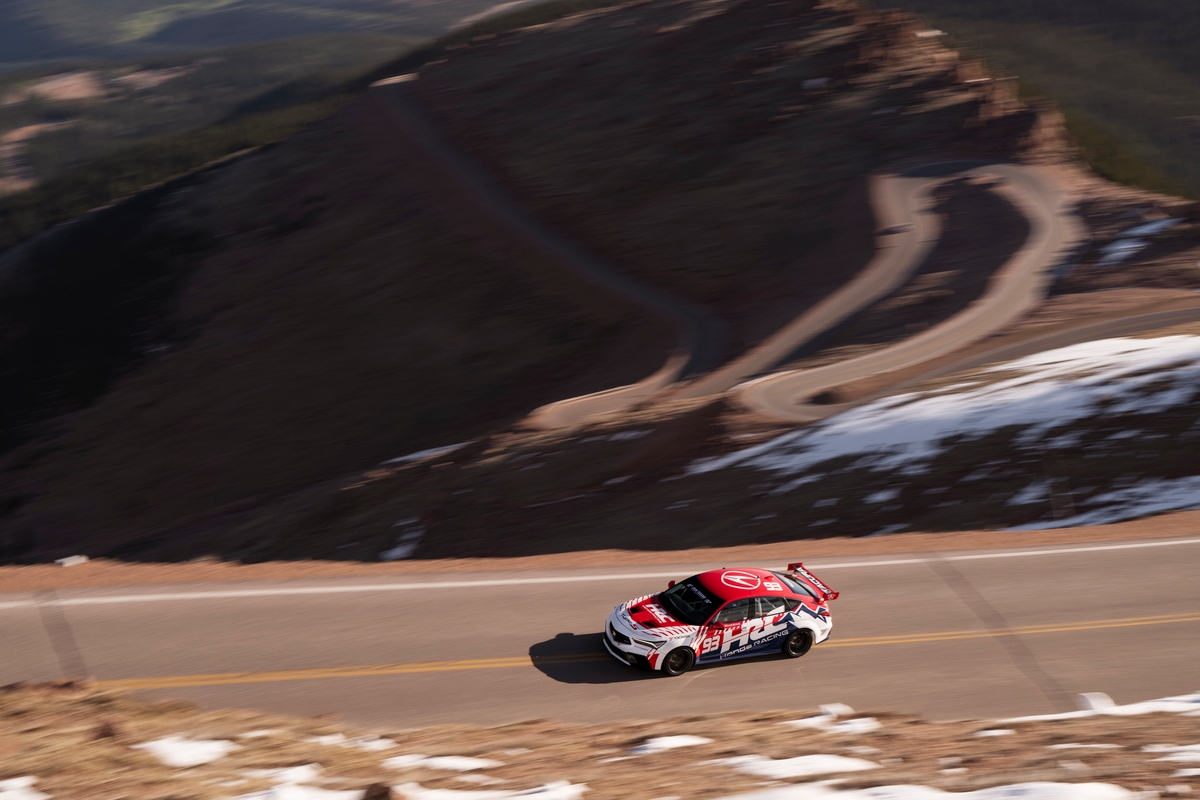
RACER: And how does it compare to a classic British hill climb like Shelsley Walsh or Goodwood?
LEGGE: I grew up 20 minutes from Goodwood, and my parents took me there to the Hillclimb and the Revival. So that’s very special to me. I think it’s just much bigger. The landscape is much different, and it’s just quintessentially American instead of British. Same premise, but different cars and a different personality, really.
RACER: Would it be fun or terrifying to tackle the hill in one of the fastest cars?
LEGGE: It would be awesome, but it would also be terrifying. I think it can be both things at the same time.
RACER: You’ve had some pretty amazing opportunities with Honda over the years, at the Indy 500, in various forms of sports car racing, and now this. Can you reflect on your time working with what is now called HRC?
LEGGE: My relationship with them started in 2012 when I did the Indy 500. Roger Griffiths was at the helm. It’s weathered all the storms, and I’m very grateful for the opportunities they’ve given me. I’ve gotten to learn so much and develop as a driver. They stuck with me through that period of time at beginning of the NSX program when I didn’t know how to drive a GT car. They’ve helped my career develop and taught me how to adapt and drive a bunch of different things. I’ve been a proud member of the team now for – crikey – almost 15 years.
RACER: Your dad was with you at Pikes Peak, and your good friend Cara Krstolic (Executive Director of Race Tire Engineering for Firestone) waved the green flag for your run. How important it is to have a strong support network?
LEGGE: My dad is a rock star. He loves it. Any form of racing, he’s there. He came to the Chili Bowl, he’s there at all the NASCAR races I’m doing now. I think it’s as much his career as it is mine at this point – we’re a team. Cara flew out to support me, and she puts up with all my crazy schemes like wanting to go climb Manitou Incline. She’s a trooper, and she’s been there as one of my best friends at all the major changing points in my life for the last 20 years now. That means the world to me.
Lyn St. James is obviously the mecca of all things in North American female driving. I lean on her a lot, and it was great that she was honored at the event as well. And to have Michele there was cool (1985 winner Mouton was inducted into the Pikes Peak Hall of Fame). Such a group of powerful women who are very inspiring to be around. We all lift each other up. Hearing Michele talk about when she went up the hill was very special to me. She was such a badass, and that gives you inspiration to keep fighting and keep trying to do it for the next generation. Maybe in a couple decades, people with think I was a badass.
ShareThis is disabled until you accept Social Networking cookies.
John Oreovicz
John Oreovicz is one of America’s most versatile motorsports writers, earning respect over a 30-year career that includes stints with National Speed Sport News, Autosport, ESPN, and RACER. He has authored several racing-themed books, including the award-winning “Indy Split” (2021, Octane Press).
Read John Oreovicz's articles
Latest News
Comments
Disqus is disabled until you accept Social Networking cookies.
